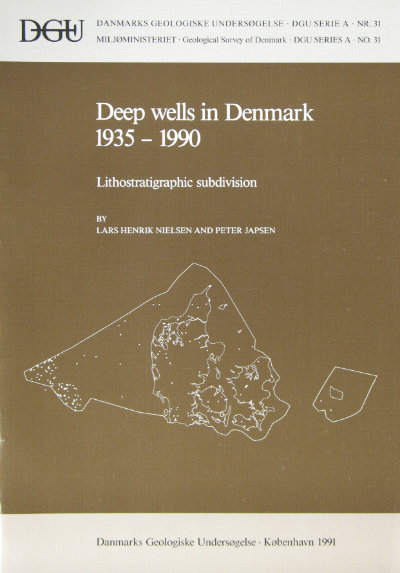Deep wells in Denmark 1935-1990. Lithostratigraphic subdivision
DOI:
https://doi.org/10.34194/seriea.v31.7051Keywords:
Denmark, lithostratigraphy, stratigraphic scheme, wells, travel time, velocityAbstract
The lithostratigraphic data presented here represent the mid-1991 status of the lithostratigraphic database at the Geological Survey of Denmark. The database comprises basic well information such as well location, company, completion date, depths and seismic two-way travel times to top and base of lithostratigraphic units recognized in the wells. Well location maps, a stratigraphic scheme and a list of selected references are included in the present publication. The aim of the presentation is to make these abundant data available to those working with subsurface geology in Denmark and adjacent areas. The key information are depths and seismic two-way travel times to top and base of lithostratigraphic units. The units are primarily recognized by means of petrophysical wireline logs measured in the wells. The boundaries of the units are indicated by significant changes in log pattern and readings as defined in the relevant publications (see reference list). The stratigraphic subdivision of the individual wells has been undertaken over the years by various geologists at the Survey and the level of subdivision thus depends on the data and time available when the subdivision was made. The database is, however, continuously revised as new wells or further work increase our knowledge of the subsurface. The database contains all exploration and appraisal wells drilled on Danish territory. The wells are included irrespective of whether the purpose was exploration for hydrocarbons, geothermal energy, or investigation of possible sites of waste-deposits or gas-storage. However, the wells drilled on the Tostrup salt structure are not included nor are production, observation and injection wells from oil or gas fields since the additional stratigraphic information provided by such wells is generally limited. Wells related to exploration and production of rock salt are not included in the database; most of these were drilled before 1953 and are dealt with in Sorgenfrei & Buch (1964, Table 1, p. 14-17). Further information concerning available logs, reports, and geological samples obtained from the wells, together with information on casings, bit sizes, and test intervals can be found in the Well Data Summary Sheets, vol. 1-16. These can be ordered from the Geological Survey of Denmark. Exploration data in Denmark are in most cases, subject to a 5-year confidentiality period. Therefore, the tables of wells drilled after mid-1986 only show data released by the Danish Energy Agency, such as location, total depth and lithostratigraphic unit at total depth. A few new wells have been released, however, due to relinquished concessions. These wells (Borg-1, Felicia-I, lbenholt-1, Mejrup-1) are presented with full data sets. Furthermore, DONG has permitted release of data from the Stenlille-2, -3, -4, -5, and -6 wells. The authors acknowledge the work of their colleagues who contributed to the database, especially Ole Vejbæk and Jens Jørgen Møller who initiated the data base together with Jens Christian Olsen. Heinke Andersen, Bent Katz, and Uli Heyden are thanked for technical assistance. Jon Ineson (Geological Survey of Denmark) and Olaf Michelsen (University of Arhus) made valuable comments on the manuscript.
Downloads
Published
Issue
Section
License
This article is distributed under a CC-BY 4.0 licence, permitting free redistribution and reproduction for any purpose, even commercial, provided proper citation of the original work. Author(s) retain copyright over the article contents.


